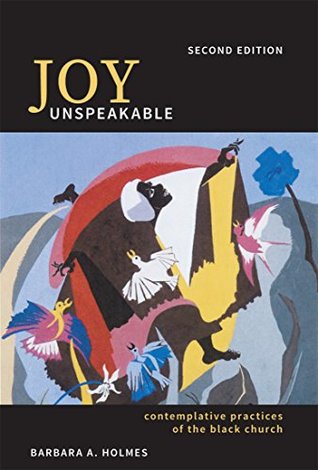More on this book
Kindle Notes & Highlights
Read between
March 29 - July 19, 2020
In order to make new worlds, you need a profound understanding of the world as it is. The key is to be grounded in present reality with a reflexive grasp of the past and an irrational hope for the future.
When Obama was elected, we were surprised and elated but not inspired to struggle for the next freedom phase. We were being represented by an articulate black man, so we voted and then left to “tend our own gardens”[30] until Black Lives Matter began organizing after the deaths of so many young black men and women at the hands of the police.
A country is only as strong as the people who make it up and the country turns into what the people want it to become. . . . Now if this country is going to be transformed, it will not be transformed by an act of God, but by all of us, by you and me. I don’t believe any longer that we can afford to say that it is entirely out of our hands. We made the world we’re living in and we have to make it over.[31]
The “already/not yet” paradox was developed by Princeton theologian Geerhardus Vos (1862–1949) in the early twentieth century. Supported by Holy Scripture, it concludes that the kingdom of God is already here as it has been promised and pronounced, but in actuality it is yet coming.
Holism is part of the sacred web that allows those engaged in contemplative practices to hold divine mystery, the fragility and failure of human attempts to flourish, and the already/not yet fulfillment of “the good” in suspension.
This is precisely the time when artists go to work-not when everything is fine, but in times of dread. That’s our job! . . . There is no time for despair, no place for self-pity, no need for silence, no room for fear. We speak, we write, we do language. That is how civilizations heal. I know the world is bruised and bleeding, and though it is important not to ignore its pain, it is also critical to refuse to succumb to its malevolence.
The only divisions between the sacred and the secular are in the minds of those who believe in and reinforce the split.
In Western cultures, we speak of sacred and secular as separate realms. This configuration of the life space is alien to Africana culture.
“While the ‘quite religious’ had the opportunity to express their mythologies, theologies, and theodicies in their church music, the ‘somewhat religious’ expressed their cosmology and religious ponderings in the blues.”[3]
Public theology is the engagement of discourse in the public sphere about issues of faith. It begins with the expectation of an ongoing dialogue with others who may or may not agree with the initial premise.
Suffering is no longer emerging from the crisis of the institution of slavery; it is coming from the angst of living with meager means and few skills to negotiate relationships.
“Improvisation is a pragmatic device for confronting the fact that life is felt to be a ‘lowdown dirty shame.’”[5] Jazz
When you know that you are “between a rock and a hard place,” then you must respond creatively to the situation. Jazz is the musical version of the communal response to displacement.
Marty concludes that the key to understanding links between worship and jazz is subsumed in the word awe. This is an emotion that is accessible to everyone. He says that “jazz can erupt in joy.” Joy infused with the riffs of awe tends to be unspeakable.
Once the Civil Rights Movement opened societal doors, those who were positioned to take advantage of the new opportunities did not want to be reminded of times past.
Lemonade is/is not about Beyoncé’s marriage. Her message is about empowerment and creativity. As the old folks would say, “if they give you lemons, make lemonade.”
In this film, we see Beyoncé “moving from isolation to strength by uniting black women and leading them” through narrative segments labelled Denial, Apathy, Reformation, Forgiveness, Hope, and Redemption.[16]
The ancestors must be laughing: How could we have forgotten so easily that prophets like Lamar and Tupac arise in every generation? While we recognized this truism in the past, we didn’t expect a contemplative artistic revolution to arise from within the ranks of the millennials.
Jon Michael Spencer calls rap messages “the insurrection of subjugated knowledges.”[21]
These artistic genres are contemplative because they ignite memories of the awe and wonder that we tend to discard after childhood. Art also carves pathways toward our inner isles of spirituality. When we decide to live in our heads only, we become isolated from the God who is closer than our next breath. To subject everything to rational analysis reduces the awe to ashes.
We have begun to realize that while overt systematic oppression may be removed, we all bear the scars and traces of racism’s collective demonic possession.
In this book, I have described the contemplative practices of the black church as a protective membrane that held the community in safety during the crisis of overt communal oppression and individual angst.


